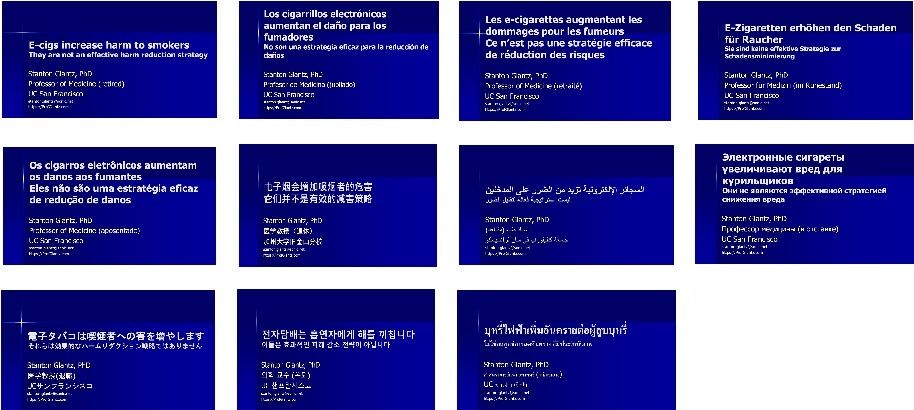California has enacted the first law, AB455, that requires sellers of single-family homes to disclose in writing any known indoor smoking, vaping, or thirdhand smoke contamination to prospective buyers. It also also directs the…

California has enacted the first law, AB455, that requires sellers of single-family homes to disclose in writing any known indoor smoking, vaping, or thirdhand smoke contamination to prospective buyers. It also also directs the…

In the 1990s, good vs. evil was clear. Back then, I focused on HIV, TB, malaria, dengue & child health, and avoided tobacco control because its go-to interventions were stigma, coercion and harm exaggerations.
At least you now admit that you are promoting an assumption.

At least you now admit that you are promoting an assumption.
You seem to WANT dual use to be the most common outcome. But you know it's:
(a) smokers on the journey to quit
(b) smokers who sometimes vape
(c) vapers who sometimes still have a cig
But Americans who smoke are 20 times more likely to TRY to quit with a nicotine vape than with Varenicline.
link.springer.com/article/10.1...

Last year we published "Population-Based Disease Odds for E-Cigarettes and Dual Use versus Cigarettes" that showed that some disease risks of e-cigarettes are indistinguishable from cigarettes and for others they on only…

Last year we published "Population-Based Disease Odds for E-Cigarettes and Dual Use versus Cigarettes" that showed that some disease risks of e-cigarettes are indistinguishable from cigarettes and for others they on only…
"Effective" = "efficacy" + USE
Efficacy: www.cochranelibrary.com/cdsr/doi/10....
Use: link.springer.com/article/10.1...



My blog post "E-cigarettes increase harm to smokers, so should not be promoted as a harm reduction strategy (in 10 slides)" has attracted a lot of…

My blog post "E-cigarettes increase harm to smokers, so should not be promoted as a harm reduction strategy (in 10 slides)" has attracted a lot of…
The new paper "How e-cigarettes compromise children’s human rights" by Tom Gatehouse and colleagues provides more evidence to inform e-cigarette policy making by reminding the delegates to the FCTC Conference of the Parties next week that they…

The new paper "How e-cigarettes compromise children’s human rights" by Tom Gatehouse and colleagues provides more evidence to inform e-cigarette policy making by reminding the delegates to the FCTC Conference of the Parties next week that they…
www.industrydocuments.ucsf.edu/all-industri...
www.industrydocuments.ucsf.edu/all-industri...

Explore the Global Index: https://globaltobaccoindex.org/

Explore the Global Index: https://globaltobaccoindex.org/
In the face of a major push by the tobacco companies and their allies to trick Parties to the WHO Framework Convention on Tobacco Control (FCTC) to integrate the industry's "harm reduction" marketing message into FCTC guidelines, the WHO has…

In the face of a major push by the tobacco companies and their allies to trick Parties to the WHO Framework Convention on Tobacco Control (FCTC) to integrate the industry's "harm reduction" marketing message into FCTC guidelines, the WHO has…
And his name is Lightwood.
And his name is Lightwood.
E-cigarettes entered both the US and UK markets 18 years ago.
Adult use has increased dramatically in both countries while adult smoking has plummeted... and lung cancer continued to drop. It IS enough time to see that, assuming a ~10 year lag.


